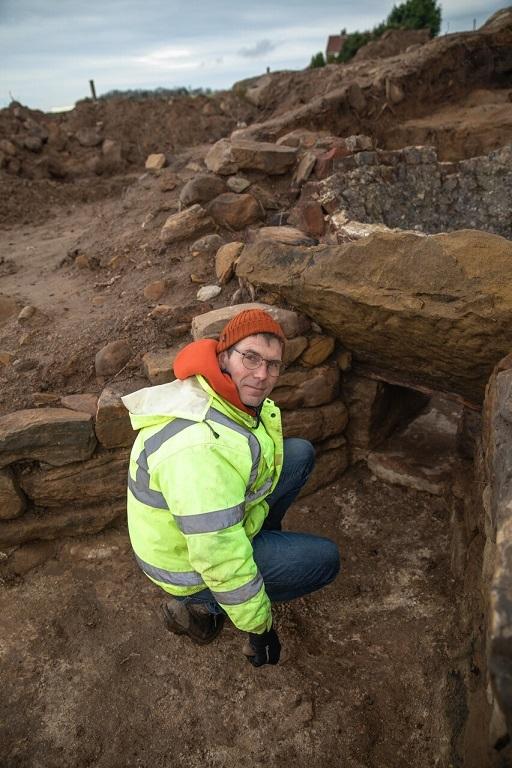An unsightly heap in the corner of a North York Moors field has revealed a well-preserved historic limestone kiln, thanks to a collaboration between the landowners, the National Park Authority and a local archaeology company.
The find has delighted Elaine and Dave Newham, who had little idea as to what the untidy mound on the edge of their land was hiding.
Elaine said: “It was completely neglected, just a heap of earth covered in discarded stones, bushes and nettles. It was marked on an old map as a kiln so we knew that’s what had been there, but we had no idea if anything was left of it.”
While researching the types of grants available for farmers and landowners in the National Park, Elaine saw that funding was available through the Farming in Protected Landscapes scheme to help conserve historic structures, as well as to enable more people learn about them. Through this scheme, the North York Moors National Park was able to provide a grant of just over £12,000 to support the excavation work.
The trees and vegetation were cleared and experts from Staithes-based company Quercus Archaeology set to work carefully investigating the mound, which measured around 300m2. This revealed a well-preserved section of the kiln’s main firing chamber, lined with handmade bricks, and a stokehole (the mouth of the kiln) from which the fire would be fed with fuel.
The kiln will have once produced lime to improve the local farmland, most likely during the 18th century. After transportation from a nearby limestone quarry, the raw product would be fired in the kiln to produce lump lime (also known as quick lime), before being dispersed over a field.
Located on the Scarborough edge of the North York Moors, the site is now undergoing a more in-depth investigation, with hope the structure can be restored as an educational asset for the benefit of the local community. New trees have also been planted nearby, to replace those removed at the start of the project.
Dave Arnott, Farming in Protected Landscapes Officer, said:
“While lime kilns are not an unusual sight in the North York Moors landscape, they remain an important link to our agricultural and industrial past. It’s fantastic that Elaine and Dave want to conserve this heritage for future generations and can see the site’s potential for
Stephen Timms, Director of Quercus Archaeology said:
“I’ve been an archaeologist for 30 years and it never ceases to amaze me what is just under your feet. We weren’t expecting to see such a well-preserved kiln under what looked like a big pile of rubble. It has been great to be involved in such a positive project which not only adds to our understanding of rural life on the North York Moors but also helps Elaine and David contribute to the local community as part of the Farming in the Protected Landscapes scheme.”
Elaine continued
“It’s been so exciting to see what’s emerged, a very worthwhile process when you think that it could have stayed as it was and been lost. Quite what’s next for our kiln, you’ll have








Comments: Our rules
We want our comments to be a lively and valuable part of our community - a place where readers can debate and engage with the most important local issues. The ability to comment on our stories is a privilege, not a right, however, and that privilege may be withdrawn if it is abused or misused.
Please report any comments that break our rules.
Read the rules here